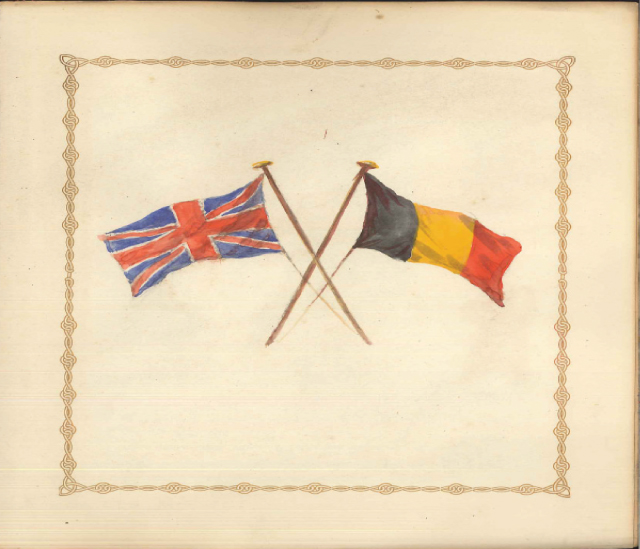With their countries gripped by war and their homes and possessions destroyed, refugees fled the battlefields of Europe. In their time of need East Sussex would provide shelter.
Agatha Christie’s most famous detective was also the fictional manifestation of a real phenomenon. Hercules Poirot may be better remembered now for his ability to solve intricate murders, but as a refugee from Belgium during the First World War he also had a backstory that would have resonated with many of Christie’s readers.
Belgian Refugees
Following the invasion of Belgium by Germany over a million Belgians fled the country and sort refuge in their nearby neighbours. The majority made their way to the Netherlands, whilst 250,000 arrived in Britain.
A mix of temporary and permanent camps and communities began to spring up around the country for these new arrivals. Earls Court in London became a makeshift refugee centre and even developed its own Belgian police force. Near Gateshead, a custom-built, gated community called Elisabethville housed the ‘Birtley Belgians’ who also worked in a nearby munitions factory. The land was considered sovereign Belgian territory for the duration of its life and also operated under Belgian law.
Because of the proximity between East Sussex and the Belgian coast, a significant number of these refugees arrived in the nearby channel ports and settled in Eastbourne. This would not have been an easy situation for either party; the Belgians having fled their war-torn country had few possessions and nowhere to go. The resident British would have needed to provide rooms and food, at least in the short term in order to support them.
Early declarations about the arriving refugees in local newspapers played on the alliance and mutual history that existed between the two countries, particularly in regards to the defeat of Napoleon a century beforehand, in order to foster warm relationships between the civilians. Other reports would highlight the need for clothes, furniture and financial support as the numbers of refugees rose and the infrastructure had to be developed to cope with higher usage and greater demands.
There were also attempts to highlight the fact that the Belgian army was still fighting in the field and that a number of those Belgians in Britain were actually wounded soldiers who had been serving alongside the British army.
Eastbourne responds
Amongst the Belgians who arrived in Eastbourne during this period were Edouard Joseph Monu and his wife Constance Anna Monu (maiden name: Coremans) were both deaf mutes. Although many details about the couple are sketchy, we do know, through a surviving relative, that they were living in Antwerp when their daughter Yvonne was born on May 14th 1900. Edouard was a photographer and the family may also have lived and worked in Lier. There is some uncertainty as to when they came to England, though the family believe that Edouard travelled by his own means to England either shortly before or after the start of WWI, perhaps motivated by the fact that Constance’s sister already lived in the country.
What is certain is that Constance and Edouard arrived in Eastbourne before May 1916 when they had a second daughter, Paula. At that time they were recorded as living at 5 Elms Buildings, Seaside Road. Elms Buildings was actually a parade of shops with grand apartments upstairs. Number 5 was an ironmongers shop owned by a gentleman named Arthur Caplin who may have volunteered to house some of the Belgian refugees who arrived in the town.
At the conclusion of the war, the government enacted plans to return 10,000 Belgian refugees to their home country a week, during the months of January and February, with most being returned to Antwerp. The government had become concerned about the possible friction caused by having ‘large bodies of unemployed foreign workers and their families’ in industrial areas that would shortly be suffering from further overcrowding with the return of British soldiers from the continent. The British Government wished to avoid destroying ‘the good feeling and harmonious relations built up since their reception as refugees in 1914’.
These harmonious relations are most easily demonstrated by the departure of the Monu family and many other Belgians from Eastbourne. As part of their departure many families contributed to and signed a book of gratitude towards the town of Eastbourne and its people for accepting them and sheltering them in their time of greatest need.















